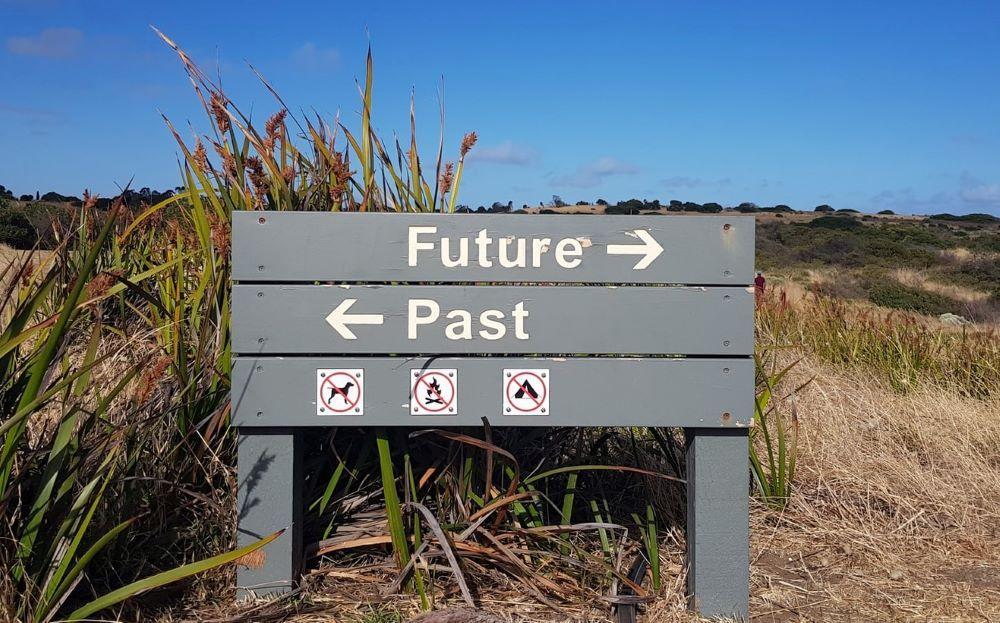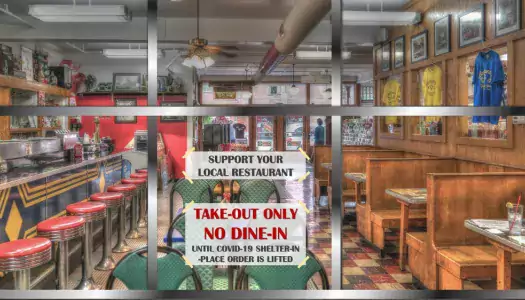No one can predict the future, not even the nice fortune-teller you visit on the way to the beach. A world full of humans with freewill can upset even the rosiest of predictions. But you and your association can identify and prepare for possible futures. Here’s what happens when you do.
In 2008, futurist and game designer Jane McGonigal led 10,000 people in a game simulating a global pandemic. The 2020 real-life pandemic eerily resembled what the gamers experienced. They told McGonigal they felt less anxious and helpless, and “could move faster to adapt and act resiliently when the future actually arrived.”
Author and technology futurist Daniel Burrus said, “We’re all going to spend the rest of our lives in the future. Maybe we should think about it a little more often.” Other staff might already have responsibility for foresight, but they don’t see things the same way you do, or have the same interests or motivations.
Think of the role as amateur or in-house futurist as lifelong learning, not another job to do. Consider it a hobby or fun, intellectual exercise. And imagine the interesting tidbits you can share with others. Yes, you can be the most interesting person in the room.

What would an in-house futurist do?
An in-house futurist does not predict the future. The Association of Professional Futurists (APF) says, “The futurist uses foresight to describe what could happen in the future.” Futurist Gerd Leonhard told PCMA Convene that futurists “use strategic frameworks and foresight—a mix of intuition, understanding, and imagination—to plan ahead.” You can do that!
The APF website describes the role of futurists and how they help their organizations prepare for the future. “Generally, a futurist is called upon to support a decision, solve a particular problem, adapt to a coming change, or identify paths toward innovation.”
The futurist scans the horizon for signals of change, sorts useful information from noise, researches trends, and studies the impact of changes. They use scenarios and forecasts to describe how possible futures might unfold. Futurists never talk about “the future,” a singular future. They always think in terms of “futures”—plural. Futurists help their organizations envision and commit to preparing for one or more of those possible futures and often are involved with adapting and testing strategies to prepare for possible futures.
Besides the Association of Professional Futurists, the Institute for the Future and Future Today Institute are helpful resources for the amateur futurist. Both host webinars and other educational events.
Why would you want to be an in-house futurist?
You’ve got to admit, delving into the world of the futurist would make your job and life more interesting. It’s a new way of looking at the world. The futurist mindset makes you pay attention and notice things you might normally miss. It teaches you to see the bigger picture, perhaps multiple bigger pictures, as well as the root causes behind trends and events.
As a futurist, you get to exercise your curiosity, analytical mind, and strategic vision—handy skills for advancing your career. You can prepare yourself and your team for disruptions and handle them with more resiliency and confidence.
APF describes a futurist exercise that would also be useful for making positive changes in your own life. “Another way to explore the future is to look deep within oneself... Visioning is used to discover new opportunities, open and expand the range of possibilities... The final step is to select from all the possibilities what is the most plausible and what is most desirable... From the vision, we can begin to understand how to move toward that future.”
Plus, what you learn could help your stock portfolio.

How would your association benefit from an in-house futurist?
Ford’s in-house futurist, Sheryl Connelly, calls herself “the polite contrarian.” Every organization could use someone who challenges the status quo, assumptions, and conventional wisdom—what Jeff De Cagna, executive advisor of Foresight First, calls “orthodoxies.” A futurist helps turn the focus from the rear-view mirror—or “what’s worked in the past”—to the road ahead and future forward-thinking.
An in-house futurist:
• Identifies trends that merit watching.
• Spots emerging opportunities that are ripe for exploration.
• Keeps your organization a step (or several steps) ahead of the competition.
• Raises awareness about the forces that might shape the future so your organization can prepare for a host of possible futures and won’t be blindsided by change.
• Shares insight that would be valuable for planning and strategizing.
Associations should welcome the insight of an in-house futurist. By supporting a culture of amateur futurists, you’ll encourage the kind of thinking that will help you prepare for any number of possible futures.
How to start your new futurist hobby
Futurists are lifelong learners, obviously. Burrus suggests spending one hour a week “unplugging from the present and plugging into our future.”
Consult diverse sources related to the association, nonprofit, membership, community, and subscription markets. But also look beyond the familiar to related sectors: higher education, for-profit education and credentialing, corporate learning and development, and workforce development.
Most importantly, look for signals in the wider world of brands and human behavior.
• What are members, customers, and attendees spending time and money on—with your association and with other organizations and brands?
• Where are these organizations spending money?
• What are they launching?
• What technology is emerging?
• What are venture capitalists investing in?
• Which companies are being acquired?
• What are the implications of these trends?
Understand what’s behind these developments and what’s causing them to move in the direction they’re heading. You’ll never lack for reading material, that’s for sure.
Study forecasting and futures scenarios so you can take what you’re seeing and imagine how it might affect your association’s industry, the association industry, your association, and your professional development and credentialing programs. Keep an eye out for fellow amateur futurists in the association and/or professional development community so you can discuss what you’re seeing and learning.
Who knows! If you enjoy thinking like a futurist in an unofficial capacity, maybe you’ll decide to go professional. Imagine how interesting you would be then.






